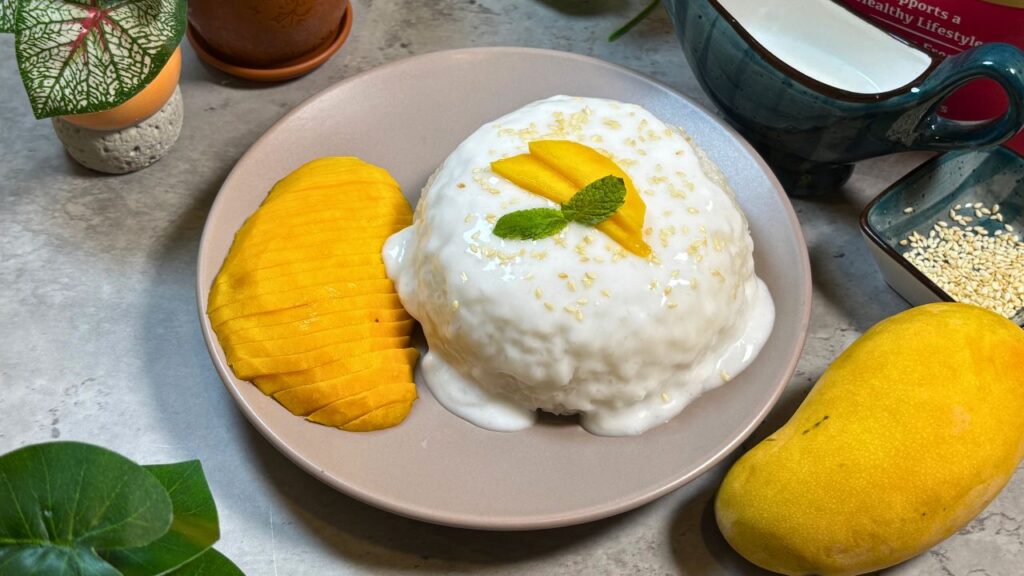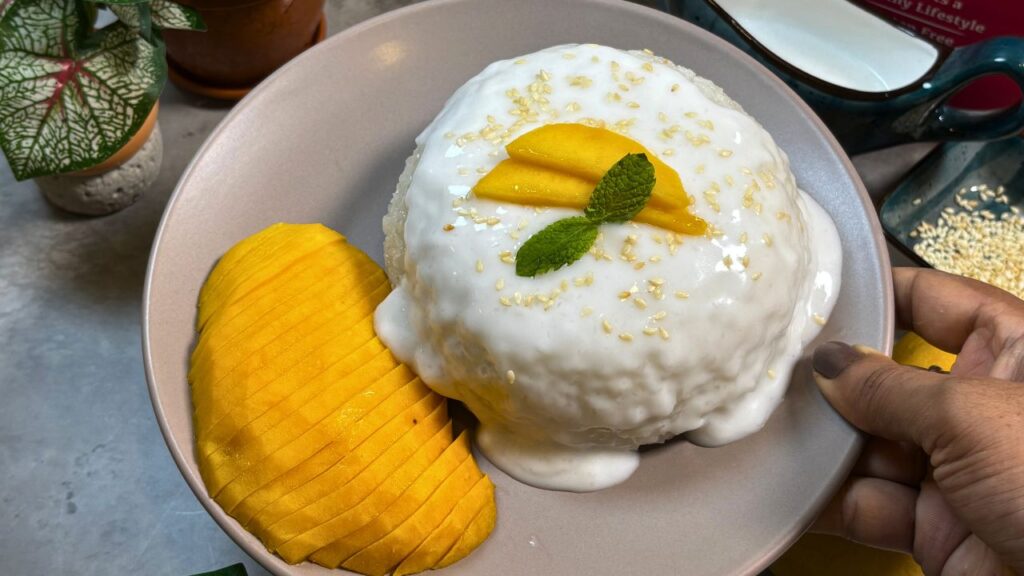




If you’re craving a dessert that’s both exotic and comforting, Mango Sticky Rice is the answer. This beloved Thai Mango Sticky Rice dessert is a staple in Southeast Asian cuisine, especially in Thailand, where it's often enjoyed during mango season. It brings together the richness of coconut, the subtle sweetness of glutinous rice, and the freshness of ripe mangoes in one harmonious dish.
Popularly known as a Sweet Sticky Rice Dessert, this treat has earned its place as a Traditional Thai Dessert thanks to its beautiful balance of flavors and its minimal yet satisfying ingredients. The creamy Coconut Milk Sticky Rice paired with sweet, juicy mango slices creates a dessert that feels indulgent, yet is made from wholesome, natural components.
Mango Sticky Rice has deep cultural roots in Thailand and neighboring countries. It’s more than just a dessert—it's a seasonal tradition. Thai households often prepare it during the hot months when mangoes are in peak condition, making it a refreshing and celebratory dish.
Its origin is linked to the use of glutinous rice in Thai cooking, which is revered for its sticky, chewy texture. Paired with rich coconut milk and local tropical fruit, this combination naturally evolved into one of the region’s most iconic desserts.
One of the reasons Mango Sticky Rice is so beloved is its simplicity. The ingredients list is short: glutinous rice, coconut milk, sugar, salt, and mango. Yet the result is a dish that surprises the palate with every bite—sweet, slightly salty, creamy, and fresh.
This contrast of flavors is what makes the dish unique. The salt in the coconut milk isn’t overpowering; it enhances the sweetness of the mango and sugar, creating a well-rounded taste experience.
The brilliance of Mango Sticky Rice lies in its flavor-texture balance. The soft, slightly chewy sticky rice soaks up the sweet and salty coconut milk, giving it a luscious, pudding-like texture. Meanwhile, the mango adds brightness and a burst of natural sugar.
When topped with a warm coconut drizzle, the dessert feels rich without being heavy. Some variations even include a crunchy topping, such as mung beans or sesame seeds, for added contrast.
Despite being a dessert, Coconut Milk Sticky Rice can be a healthier alternative to many processed sweets. It’s gluten-free and made from natural ingredients. Using ripe mango means you can skip excessive amounts of sugar, making it suitable for those who prefer cleaner eating.
You can also adjust the richness by using light coconut milk or controlling the sugar quantity. The natural sweetness from the mango often makes added sweeteners almost optional.
Whether you're serving it to kids, adults, or guests new to Thai cuisine, Mango Sticky Rice is always a hit. Its appealing look—vibrant yellow mango next to soft white rice, drizzled with glossy coconut cream—is both eye-catching and inviting.
This dessert is gentle on the stomach and ideal after a spicy or savory meal. It cools the palate and leaves a pleasant, lingering sweetness without the heaviness of cakes or pastries.
If you follow a vegan diet, this dessert checks all the boxes. It’s naturally dairy-free and can be made with plant-based sugars like coconut sugar or maple syrup. The sticky rice provides substance and satisfaction, while the coconut milk adds creaminess without any animal ingredients.
This makes it a perfect dessert to share at gatherings, especially where dietary preferences vary. It’s inclusive, delicious, and universally loved.
Mango Sticky Rice is more than just an everyday dessert—it’s ideal for celebrations and festive meals. In Thailand, it’s often served at family gatherings and traditional events. Its vibrant presentation and balance of flavors make it a popular choice for cultural festivals, food markets, and fine dining alike.
You can even shape the sticky rice into small molds or use cookie cutters to create artistic plating for a fancier version of this humble dessert.
Though deeply rooted in Thai cuisine, Mango Sticky Rice has gained international popularity. You'll find versions of it in Vietnamese, Filipino, and Cambodian cooking, and it has even made its way into Western fusion menus.
Foodies around the world appreciate the dish’s minimalism and its unique take on a fruit-and-grain pairing. It's no wonder that it continues to be a go-to dessert in global food culture.
Want to give it your personal twist? Here are some fun customizations:
While best served fresh, Mango Sticky Rice can be partially made in advance. Cook the sticky rice and prepare the coconut sauce ahead of time. Reheat gently before serving and slice the mango fresh for the best experience.
Leftovers can be stored in the refrigerator for up to two days. Just keep the mango and rice in separate containers to maintain texture and flavor.

Mango Sticky Rice is more than just a sweet treat—it's a celebration of balance, simplicity, and tradition. Whether you’re new to Thai cuisine or a long-time lover of Southeast Asian food, this dessert is sure to leave a lasting impression.
From the creamy richness of Coconut Milk Sticky Rice to the juicy burst of mango, every spoonful feels like a spoonful of summer. The beauty of this Traditional Thai Dessert is that it’s as easy to make as it is to fall in love with.
So the next time you're craving something sweet, wholesome, and a little tropical, give Thai Mango Sticky Rice a try. Your taste buds will thank you.